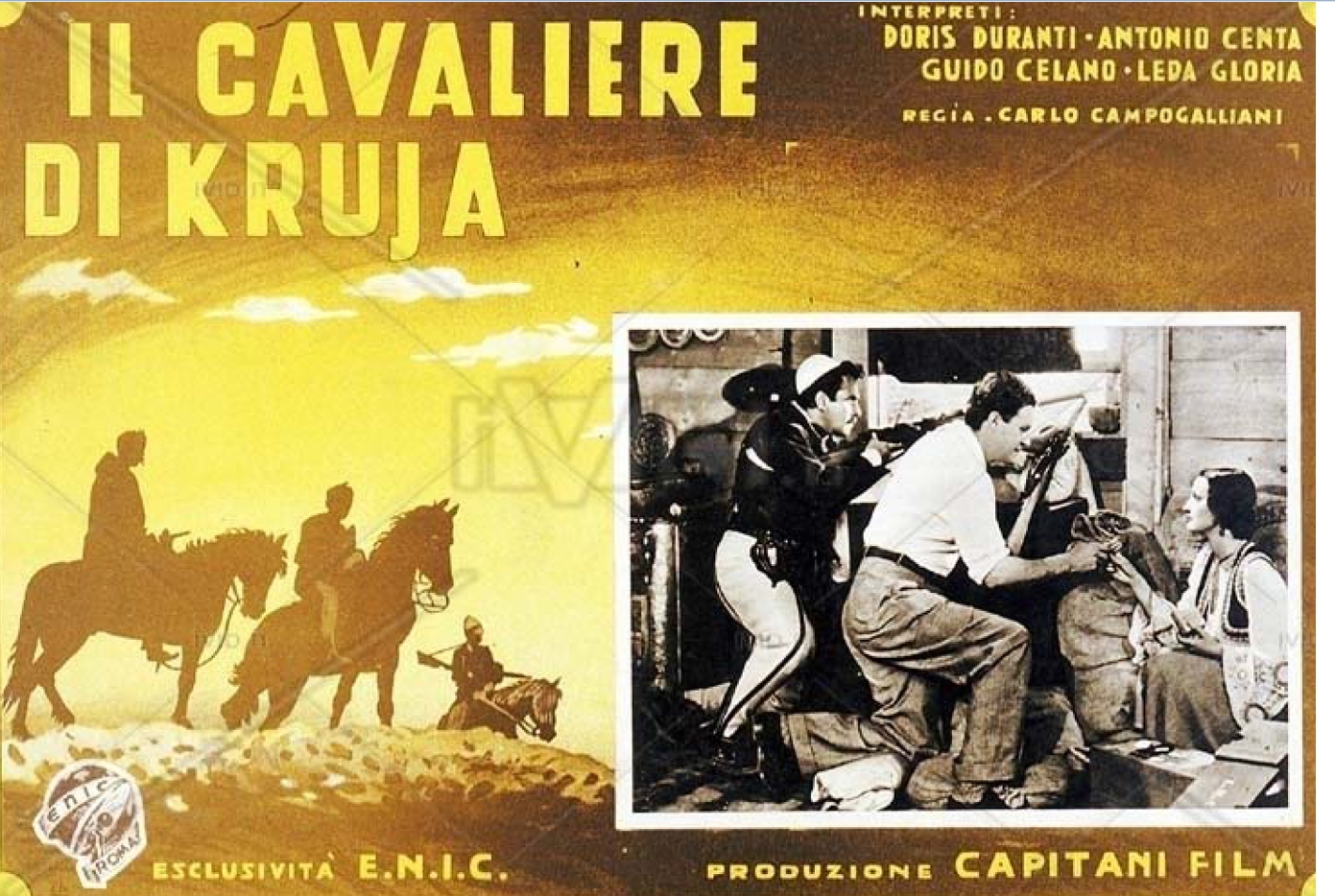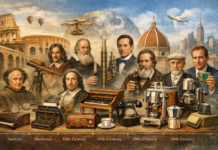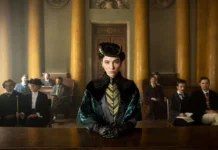
Italian cinema, one of the world’s oldest and most influential film traditions, found itself profoundly shaped by the socio-political shifts of the early 20th century. With a burgeoning national film industry in place, Italy soon became a cinematic force, particularly during the interwar years, when cinema served both as an art form and a powerful medium of political persuasion. The era marked the rise of Italy’s first cinematic stars and the advent of a genre that would later be known as the propaganda film. These films were designed to champion Italian ideals, presenting stories of heroism often set against a mythological or wartime backdrop.
The Rise of the Italian Film Industry
Before delving into the influence of propaganda, it’s essential to understand the early growth of Italian cinema. By the 1910s, Italy had become renowned for producing grand historical epics, like Quo Vadis (1913) and Cabiria (1914). These films established Italy as a major player in the international film landscape, known for ambitious storytelling and lavish production designs. As the industry grew, it gave rise to Italy’s first film stars and directors, some of whom would later play a crucial role during the Fascist era.
Birth of the Propaganda Film: Myth and Heroism on Screen
During the war years, Italian cinema began producing a new genre that could captivate audiences while subtly promoting nationalist ideals: the propaganda film. These films often showcased a heroic protagonist, sometimes drawn from myth or history, undertaking dramatic and patriotic adventures. While these figures faced considerable challenges, they seldom questioned the nature of war or the suffering it caused. Instead, they celebrated heroism, sacrifice, and loyalty to the nation.
The thematic elements of propaganda films aligned closely with the values Mussolini’s government wished to promote, setting up the archetype of the valiant soldier who fought for glory and country without hesitation. Though this genre initially took root during the war years, it reached new heights as Italian fascism advanced.
Cinema as a Tool of Mussolini’s Regime
Under Benito Mussolini’s rule, film was strategically leveraged, although Italian audiences proved to be selective consumers. The Italian public showed limited enthusiasm for overtly serious or propagandistic content, which made it difficult for the government to use cinema as a blunt tool of propaganda. In response, the regime used subtler, multi-layered approaches.
One of these strategies was to establish strict censorship, which was intended to remove or ban any content critical of the Fascist regime or its values. By silencing dissent and filtering content through a government lens, the authorities could control the narrative without necessarily producing propaganda films in the traditional sense. Additionally, the government set up dedicated agencies to produce documentaries that highlighted Fascist accomplishments, such as infrastructure projects, public works, and national festivals. These documentaries aimed to remind viewers of Italy’s supposed progress under Fascism.
Fascist Propaganda in the “Black” Films
The most direct Fascist propaganda in Italian cinema appeared in what were known as “black” films. Unlike traditional feature-length films, these were typically short newsreels that aired before the main movie. They highlighted military victories, diplomatic successes, or showcased Mussolini himself at public events. Italian moviegoers became accustomed to seeing these brief yet potent reels, with their glorified depictions of the Fascist regime, just before settling in to watch their chosen feature film.
Black films offered a highly polished, idealized image of Fascist Italy, portraying a nation that was strong, united, and advancing under Mussolini’s vision. These films were concise yet impactful, delivering a pro-Fascist message within minutes, often relying on potent imagery and stirring music to reinforce the emotional impact.
White Telephone Films: Romance and Escapism Amidst Fascism
On the other side of the spectrum, Italian filmmakers produced films known as “white telephone” films. These films derived their name from the high-society settings they portrayed, where characters conversed on stylish white telephones, symbolizing modernity and luxury. These movies focused on melodramatic romances, comedies, and dramas that seemed far removed from the real issues facing Italy.
White telephone films typically featured glamorous actors and actresses embroiled in tales of romance, scandal, and intrigue, offering a temporary escape from the oppressive realities of Fascist rule. While they avoided overt political messages, these films subtly reinforced traditional values such as family loyalty, marital fidelity, and gender roles, all of which aligned with Fascist ideals of social order and stability. Their lack of explicit propaganda allowed audiences to enjoy them as entertainment while still subtly absorbing pro-Fascist values.
Films Caught in the Middle: Fascist Ideals in Fictional War Stories
Although propaganda and escapist films dominated the cinematic landscape, many Italian films from the Fascist era fell somewhere between the two. These were fictionalized war films infused with nationalist fervor, combining dramatic, often romanticized storylines with themes that celebrated military life and valor. They did not always serve as blatant propaganda but were nonetheless aligned with Fascist ideology.
These war-based narratives emphasized themes such as duty, honor, and patriotism, which were central to Fascist values. Rather than focusing on the horrors of war, these films highlighted acts of bravery and the glory of combat, leaving Italian audiences with a sense of pride and admiration for the armed forces.
Italian Cinema’s Duality: Entertainment vs. Ideology
The Fascist era in Italian cinema showcases the tension between entertainment and ideology. While the government attempted to impose its influence, the Italian film industry also found ways to create escapist content that subtly reflected everyday struggles and fantasies, albeit within the boundaries of censorship. This duality is particularly notable because, on one hand, it demonstrates the resilience of Italian filmmakers in their quest for creative expression, while on the other, it shows how even entertainment could serve to reinforce certain political values.
The influence of Fascist ideology in Italian cinema gradually waned with the fall of Mussolini and the liberation of Italy. However, the Fascist era left a lasting impact on Italian cinema, leading to the emergence of neorealismo (Italian neorealism) shortly after World War II—a movement that would redefine Italian cinema through its unfiltered portrayal of post-war Italian life.
Notable Italian Films from the Fascist Era
Below is a selection of notable Italian films from the Fascist era that reflect the cinematic diversity of this period, from propaganda films to popular white telephone movies:
1. Scipione l’Africano (1937) – Directed by Carmine Gallone, this epic film glorifies ancient Rome and its military power, drawing implicit parallels to Mussolini’s ambitions.
2. Luciano Serra, Pilota (1938) – Directed by Goffredo Alessandrini, this patriotic war film tells the story of a heroic Italian aviator and was awarded a prestigious prize by Mussolini himself.
3. Casta Diva (1935) – Directed by Carmine Gallone, this popular white telephone film tells a melodramatic love story set against the world of opera.
4. La Freccia d’Oro (1935) – A romance-comedy film that epitomizes the light-hearted escapism of the white telephone genre, directed by Corrado D’Errico.
5. Lo Squadrone Bianco (1936) – Another of Alessandrini’s works, this film portrays the Italian colonial army in North Africa, celebrating Italian military power and empire.
These films encapsulate the range of Italian cinema during the Fascist era, showcasing both the government’s attempts to promote Fascist ideals and the industry’s creation of lighter fare that provided Italian audiences with an escape from their daily realities.
Italian Dating & Chat for Italian Singles

Virtually meet thousands of like-minded Italian singles and connect at lightning speed; on desktop, tablet, and your beloved phone. Chat into the wee hours of the night if you’d like. Post photos, share your interests and dreams-we’ll help you look your best while you do it.Here we make it easy to meet Italian singles and feel things out first so when you do go on that first date, or meet for espresso, you can relax and be yourself. Try it now!





